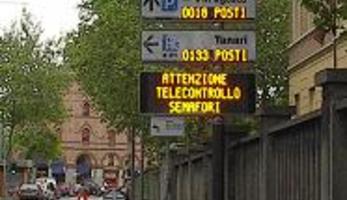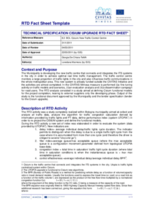New traffic control centre
Thematic areas
Smart, Sustainable, Connected and Shared mobility
Summary
Bologna aimed to improve the efficiency of the city’s transport system with a new traffic control centre that would connect and integrate various intelligent transport systems to facilitate optimal real-time traffic management.
Implementing sustainable mobility
Bologna is developing a new traffic control centre named Cisium that will eventually manage traffic in the entire metropolitan area.
The main objectives of the measure are to:
- Improve traffic control in the urban area;
- Provide real-time traffic information for citizens through different channels; and
- Provide the municipality’s technicians with better traffic planning tools.
The new control centre will take advantage of innovative communication tools based on the TMC-DATEX protocol. It will facilitate sending messages on the traffic situation in real-time via car radios, onboard GPS navigation devices and to other traffic operators like the motorway control centre. The system will also feed into a database that will let the city develop a detailed traffic model that will help technicians to manage traffic and promptly react to congestion based on empirical data. Bologna has already started the development of the new traffic control centre and will complete it under CIVITAS MIMOSA.
Progress
The development of the new intelligent transport system (ITS) for the traffic control centre is completed. A detailed scientific study provided a traffic model and scenario analysis. This was followed by traffic model and algorithm analysis to identify and define several technical aspects in the framework of Cisium. A study on the TMC protocol was carried out, as well. Based on these insights, the ITS was developed. The control centre entered an extensive testing period, during which bugs and other issues were addressed and the algorithm was fine-tuned. Parameter tuning remains an ongoing task. Technicians of the Municipality designed a project to integrate data from the traffic control centre on traffic flows into Google maps. The necessary software has been developed and the city signed an agreement with Google. Bologna was one of the first city in Italy to provide a traffic service on Google maps with information directly coming from the Municipality. The Municipality has worked on data collection for evaluation and a dissemination campaign has informed road users about the new system and results obtained. Indicators are based on traffic flow monitoring with ITS instruments and desktop research. A cost-benefit analysis has been part of the evaluation. Traffic models and scenarios will need to be continuously amended. In September 2010, Bologna received an award for the traffic technologies it was implementing at the CIVITAS Awards ceremony in Malmo. Thanks to an agreement signed with Bologna Airport, information on traffic and the presence of road works in progress in the city are displayed on information panels at the airport arrival terminal through a communication system based on a Tmc protocol. In September 2011 a public bid for the development of a third congestion indicator has been awarded, outside MIMOSA, in the framework of the Italian project Simone. This new indicator is based on floating car data (FCD). The new traffic control centre now connects and integrates the Municipality ITS systems, controls almost all the traffic-lights deployed in the city and helps improve the communication linked to traffic condition all across the whole metropolitan area, aiming to achieve an optimal on-time traffic management. Anyway research activities to further improve the system are still ongoing. In 2012 a new dedicated webpage http://cisium.webhop.net/home.do was also made available in order to obtain real on-time information on traffic condition and events. The updated Cisium features were illustrated and disseminated in the framework of several conferences on mobility. Data collection to finalize the cost&benefits analysis was also carried out.
Activities to further improve the system will be carried out after the end of MIMOSA. They will cover the following items: - Including other traffic lights in the system; - Using data on private vehicle flows; - Installing Automatic Vehicle Monitoring on a larger number of buses; - Introducing new control systems (e.g. new traffic monitoring cameras).
Outcomes
Designing the measure, the expected results of the measure were: - An optimisation of traffic management; - A measurable decrease of waiting times at traffic lights; - A measurable increase in the prioritisation of public transport buses.
The key results obtained are the following: - Improvement of traffic control in the urban area: fully achieved thanks to each of the CISIUM actions (crossings managed by CISIUM); - In relation to decreasing waiting times at traffic lights, waiting times were reduced by a few seconds or less at pedestrian crossings, single intersections just the time required to allow even a few vehicles to pass on. These gains do improve the flow fluidity at intersections but are not perceived by drivers. For this reason results are not immediately visible. - Enhancing bus prioritisation at traffic lights. This led to shorter travel times for the bus routes included in the evaluation, with a reduction in delays and an increase in slightly early bus departures; - Providing real-time traffic information for citizens through different channels.









